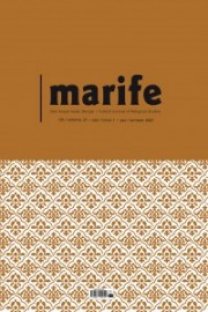Tefsir’in Temel İlkeleri Çerçevesinde Kur’ân-ı Kerîm’de "Ehl-i Beyt"
Ahl al-Bayt in the Qur’an Within the Context of Main Principles of Tafseer
___
..........................................................................................................................................................................................................................................................................................................................................- Yayın Aralığı: 2
- Başlangıç: 31.05.2001
- Yayıncı: Yediveren Kitap
Tefsir’in Temel İlkeleri Çerçevesinde Kur’ân-ı Kerîm’de "Ehl-i Beyt"
İmamî Şiî Hukuk Sisteminde Humus/Beştebir
İmamet-İsmet İlişkisi Çerçevesinde İbn Teymiyye’nin Ehl-i Beyt’e Yaklaşımı
Tefsir’in Temel İlkeleri Çerçevesinde Kur’ân-ı Kerîm’de "Ehl-i Beyt"
İslam Tarihi’nin İlk İki Asrında Ehl-i Beyt’e İdeolojik Yaklaşımlar
Arap Siyasî Geleneğinin Ehl-i Beyt Tamlamasının Kavramlaşma Sürecine Etkisi
"Ben İlim Şehriyim Ali de Onun Kapısıdır" Hadisi Üzerine
Ehl-i Beyt Sevgisinin "Tercüman"ları
Şiî ve Sünnî Müfessirlerin Ehl-i Beyt’le İlgili Bazı Ayetlere Yaklaşımları Üzerine
